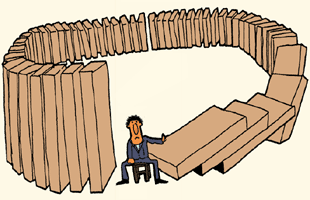Makers of Modern Dalit History is a joint effort by Sudarshan Rambadran and Guru Prakash Paswan. The book is well researched project to document the adversity and travails of the subaltern communities that make an important weft of our social fabric but are belittled or kept disadvantaged in the social ladder. The book documents eighteen luminaries from such disadvantaged backgrounds who defy the impossible to chart pathbreaking course of their lives. The personalities have been picked from far back in history like Kabir Das, Guru Ravidas, Rani Jhalkaribai, Veda Vyasa, Sant Janabai, Ayyankali, to closer in time such as Jogendranath Mandal, Babu Jagjivan Ram, Udham Singh, B R Ambedkar etc.
Most individuals we have known with some details and some only by name. So it made for a pleasant and interesting read to know some unknown details from these life accounts not just about the adverse situation made due to the political, religious , social rules that they had to face and fight but also how they were able to motivate and take the masses along with them. Some facts like Guru Nanak , Guru Raidas and Kabir were contemporary and met together at least once was an eyeopener. The book must be read to find some such nuggets in those biographical chapters.<br />The language of the book is simple and without jargons so that one easily slips from one chapter to the next. And herein lies a little catch for one to catch the moment, era, ethos of an individual and then retain the flavour, one needs to forego jumping too quickly from one to the next. Other than that, the book is a reminder to the difficulties faced by a part of our society but the authors maintain the tone in a positive way rather than be recriminatory, exhorting for equity and progress for all within the framework of existing social and constitutional structures.














.png)